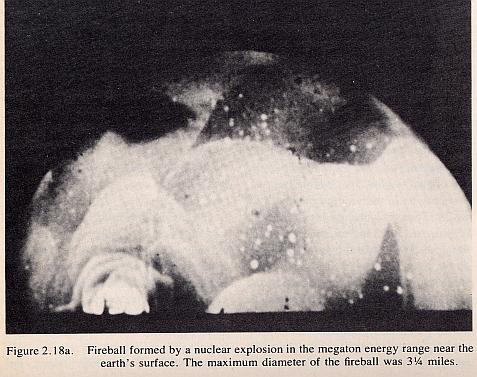|
|
These pressure phases give origin to winds that may reach a velocity of 1,072 kilometer per hour; the overpressure and the speed of the resulting winds are related to both the weapon's power and the height at which it is detonated. In an explosion on the ground a large part of the energy is absorbed by the environmental morphology and structures; the same weapon detonated at an altitude of 1,500 meters will cause damage and destruction on a much wider area. The shock wave is reflected from the surface of the ground and reinforces itself, a condition known as Mach effect, due to which there are two shock waves: one derived from the explosion itself and the other an echo reflected from the environment and structures in the zone so that when these two waves collide the result is a doubling of the overpressure and a corresponding increase of the speed and intensity of the wind. The combined effect of these two phases of pressure is to compress, i.e., implode, and expand i.e., explode. The explosion in the atmosphere of a 1-megaton weapon would cause an overpressure of 5 psi at a distance of 6 kilometers, which would exert a pressure of 180 tons on the walls of a small two-storeys building. Meanwhile the wind would travel at a speed of 255 kilometers per hour. The shock wave's strength decreases in proportion to the distance from ground zero.
